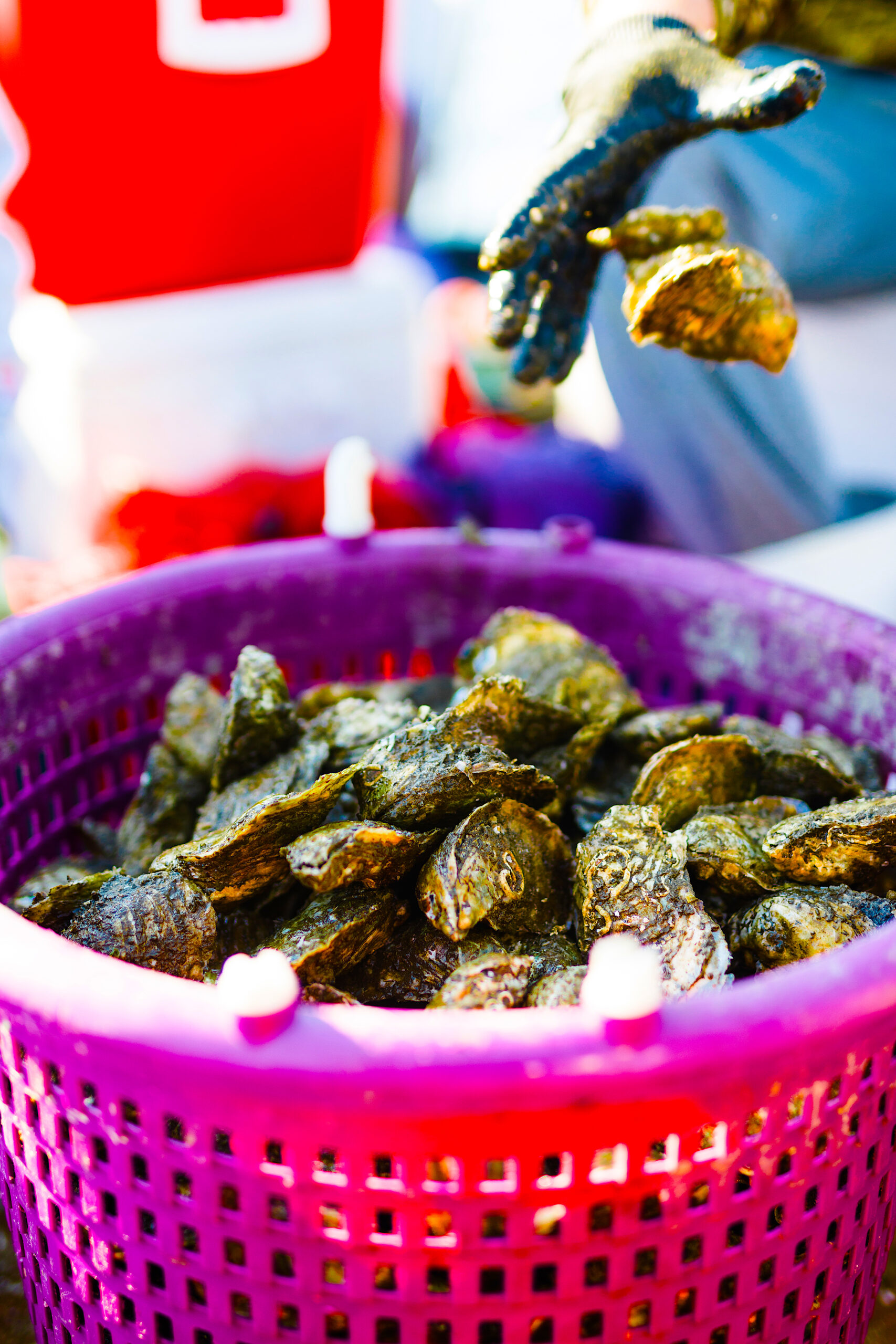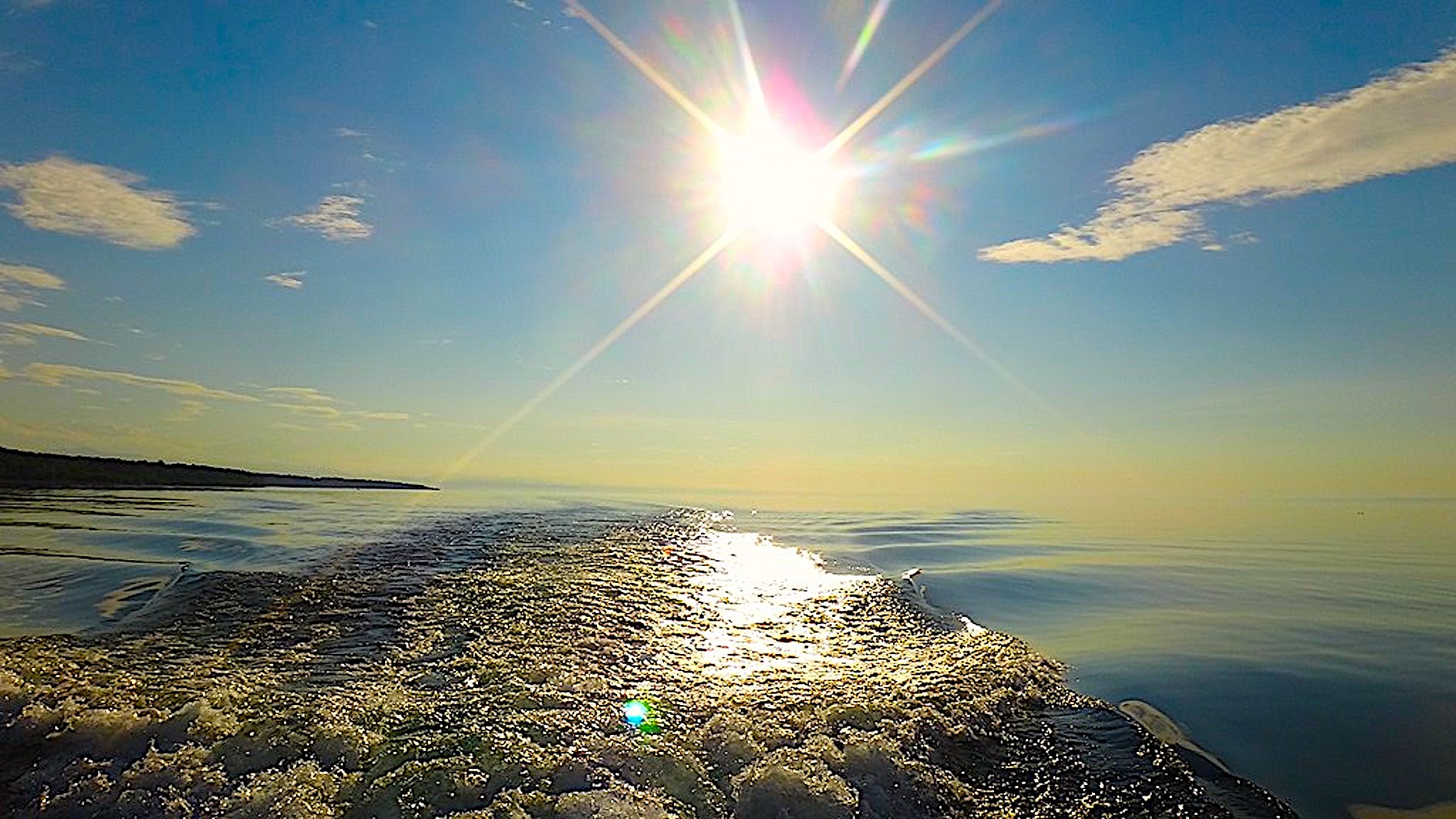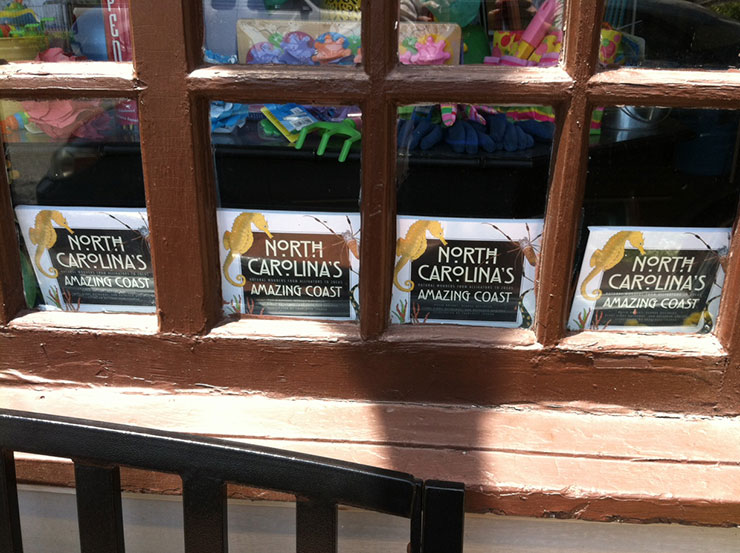This year, North Carolina Sea Grant will fund six N.C. Blue Crab and Shellfish Research Program projects. The BCSRP pairs crabbers, and shellfish harvesters and farmers with researchers and fishery managers to investigate and enhance North Carolina’s blue crab and shellfish fisheries.
“It links fishermen and researchers to do collaborative research on these fisheries that are important to the state,” says Marc Turano, mariculture and blue crab extension specialist with Sea Grant.
This year, research topics include crab-pot loss, oyster spat monitoring and oyster shell-eroding sponges.

A researcher with the University of North Carolina Wilmington will work with a Carteret County oyster grower and a Virginia Institute of Marine Science scientist to learn about the distribution and impacts of the oyster parasite Bonamia exitiosa. A recent shipment of North Carolina oysters had higher-than-average levels of the parasite. The team plans to look at new techniques for monitoring oyster health.
University and agency researchers are working with fishermen and nonprofits to create a community-based marine debris removal program in Pamlico Sound. Using side-scanning sonar, the team will identify and remove abandoned crab pots and other potentially harmful marine debris.
The research program, administered by Sea Grant, supports innovative projects that address biological, social and economic questions, assess or enhance populations, or develop new technologies for these important fisheries.
The 2013 projects are listed below:
Social and Economic Impacts of the Blue Crab Fishery
REDUCING CRAB POT LOSS IN THE ALBEMARLE SOUND. Henry Bond and Aaron Hughes from Edenton, and Geoff Bell from the University of North Carolina at Chapel Hill.
Health and Disease of Shellfish Populations
THE DISTRIBUTION AND IMPACT OF THE OYSTER PARASITE BONAMIA EXITIOSA ON THE EASTERN OYSTER, CRASSOSTREA VIRGINICA. Ami Wilbur from UNCW, Ryan Carnegie from VIMS and James Morris from Beaufort.
Mariculture
IDENTIFICATION OF POTENTIAL INTERACTIONS BETWEEN RACK AND CAGE SHELLFISH CULTURE AND ADJACENT CRITICAL HABITAT. Martin Posey, Troy Alphin and James Hargrove from UNCW.
Shellfish Restoration
ENHANCEMENT OF THE NORTH CAROLINA STATEWIDE OYSTER SPAT MONITORING PROGRAM. Troy Alphin from UNCW.
COMMUNITY-BASED MARINE DEBRIS REMOVAL IN PAMLICO SOUND. Ladd Bayliss from N.C. Coastal Federation in Newport, Robby Midgett from Stumpy Point, Kirk Havens from VIMS, as well as participation from the N.C. Division of Marine Fisheries, the N.C. Wildlife Resources Commission and The Nature Conservancy.
REPRODUCTIVE TIMING, LARVAL OUTPUT, AND DISPERSAL POTENTIAL OF OYSTER-SHELL ERODING SPONGES IN NORTH CAROLINA ESTUARIES AND SOUNDS. Niels Lindquist from UNC Institute of Marine Sciences and Craig Hardy from NCDMF.
This article was published in the Summer 2013 issue of Coastwatch.
For contact information and reprint requests, visit ncseagrant.ncsu.edu/coastwatch/contact/.



